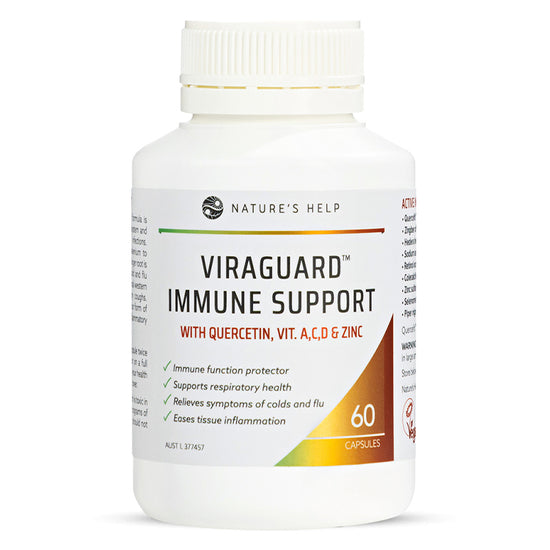Allergies can develop at any age because your immune system is constantly changing. With allergies, your immune system is overacting to harmless allergens – in most cases, harmless.
There are 8 typical types of allergies:
- Pollen
- Food
- Insect stings
- Drugs
- Mould
- Pets
- Latex
- Perfumes and household chemicals
POLLEN
The most common allergy causes in the world is pollen, causing allergic rhinitis other known as hay fever causing symptoms like sneezing, runny nose, and itchy eyes. 1 in 5 Australians suffer hay fever issues. Often related to the spring season when plants release a fine yellow powder for fertilising same plant species, by giving off pollen particles carried on breezes, straight to your nose, mouth, and eyes. It takes about 10 days for the symptoms to diminish, so we recommend taking turmeric daily to reduce the inflammation. Curcumin the active ingredient in turmeric can reduce the swelling and irritation of allergic rhinitis. Purchase good quality organic turmeric capsules from Turmeric Australia.
FOOD
Over the last 4 decades, there has been a substantial increase in food allergies that scientists struggle to readily explain. Peanuts, milk, soy, wheat, eggs, nuts, and shellfish feature extensively as food allergy triggers. A food allergy reaction can often be spontaneous and tragic if not treated immediately. The body produces an anaphylaxis reaction, which is life-threatening. Patients aware of their severe reactions always carry an Epi-pen with them. Epinephrine works immediately to stimulate the heart, raise blood pressure, relieve throat constriction, and reduce any swelling. Peanuts and shellfish are very high triggers for anaphylaxis shock. Loss of consciousness happens quickly.
INSECT STINGS
Venom from bee, wasp and ant stings can cause reactions in susceptible people, often triggering the anaphylaxis life-threatening reaction also. In Australia, the honeybee, paper wasps and bull ants garner the most allergic reactions. Symptoms include throat swelling with breathing trouble and a rash. Blood pressure drops as your body goes into shock. There may also be tummy pain and vomiting. Again, people aware of their condition carry an Epi-pen for immediate relief. On average 3 people die each year in Australia from anaphylaxis shock. On a lesser scale, a person may just experience an overall rash as an allergic reaction. There is no explanation as to why people are affected differently.
DRUGS
A drug side effect is not the same as an adverse drug allergy. A drug allergy induces an immune system reaction. All medications are capable of triggering an allergy. Hives, rash, swelling, or fever are the most common symptoms, with anaphylaxis shock possible too. Penicillin is the most common drug allergy affecting about 10% of the population. Reacting to drugs can happen the very first time the drug is ingested or develop over time. No one person is the same. It is simply your immune system producing antibodies to the drug. The antibodies move to cells that release chemicals, causing reactions in your nose, lungs, throat, sinuses, ears, lining of the stomach or on the skin.
MOULD
A mould allergy is your immune system overreacting to mould spores that you have inhaled. You will feel miserable with the proverbial runny nose and itchy eyes. A mould allergy can be linked to asthma giving you breathing difficulties and wheezing. It is advisable to operate a dehumidifier in your home to reduce humidity and keep the air dry.
PETS
Mostly associated with cats and dogs, any animal with hair, fur or feathers can set you on a path of sneezing, runny nose, and swollen eyes. Your body reacts to proteins in an animal’s skin cells, saliva or urine. Symptoms are similar to hay fever. Your immune system has made a mistake and starts making antibodies to something that is not harmful to you.
LATEX
A latex allergy has developed over recent years. Most people who render an allergic reaction have had constant exposure to latex, such as doctors, nurses, and dentists. Though the affected people probably have a predisposition to asthma and eczema. Latex protein can leach from gloves into your skin or when gloves are taken off the protein can become airborne.
PERFUMES AND CHEMICALS
Over 2500 chemicals can cause irritations. People sensitive to chemicals probably find strong scents problematic and will react with allergy symptoms. Sensitivity to smells is called hyperosmia. Citronella is a common trigger, as is cigarette smoke. Perfumes are used in soaps, cosmetics, sunscreens, etc. Preservatives and antibacterial chemicals are added to liquids. Formaldehyde is in nail care products. Fragrances and chemicals are not allergens. They are chemical aggravations. The majority of reactions are just sensitivities, as an allergy happens when reacting to an organic protein.
Do contact your doctor and avail yourself of an allergy skin test. Up to 50 substances can be tested. A positive reaction will cause an itchy raised lump. This will guide you towards actions you take to minimise your risk.










